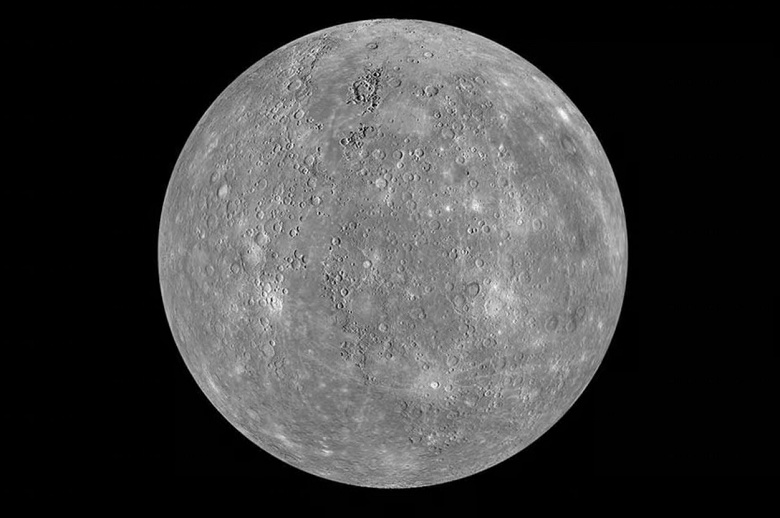Salt glaciers can become a refuge for the survival of specific forms of microorganisms
The daytime surface temperature of Mercury can reach 230 °C. It has no atmosphere or magnetic field and appears dry and lifeless. However, it may turn out that this is not the case.
Recent research by a team of scientists from the Planetary Science Institute (Arizona) proposes a hypothesis about the presence of underground salt glaciers in the area of Mercury's north pole. The hypothesis arose despite the extreme conditions characteristic of this planet.
Based on previous discoveries of nitrogen glaciers on Pluto thanks to NASA's New Horizons mission, scientists theorized that glaciers on Mercury may have formed as a result of water flowing from areas surrounding the planet's core during volcanic activity in ancient times. When the water reached the polar region, it formed shallow seas that interacted with salt flows and formed frozen glaciers. This hypothesis is based on computer models with data obtained from NASA's MESSENGER orbiter.
The underground salt glacier areas on Mercury remained cold while the planet still had an atmosphere that protected these areas from solar radiation. Liquid water could then form and persist under the icy crust.
According to the data, these areas are rich in volatile substances and create characteristic structures on the surface in the form of “sublimation pits”. Such pits are formed as a result of a process in which the material goes from a solid state directly to a gaseous state. On Mercury, where salt glaciers occur, sublimation of ice can create such pits as frozen water directly turns into a gas under the influence of vacuum and intense solar radiation. These formations can be found inside craters and indicate the processes of sublimation of ice under the surface of the planet.
If these theoretical assumptions are confirmed, they could have important implications for ideas about the existence of biomarkers in the Solar System. Underground salt glaciers on Mercury may provide habitat for extremophilic microbial life. Although they are hostile to common microorganisms, these underground glaciers may be home to unique life forms that have already been found on Earth in extreme environments such as the Atacama Desert, the Dead Sea and hot springs.

